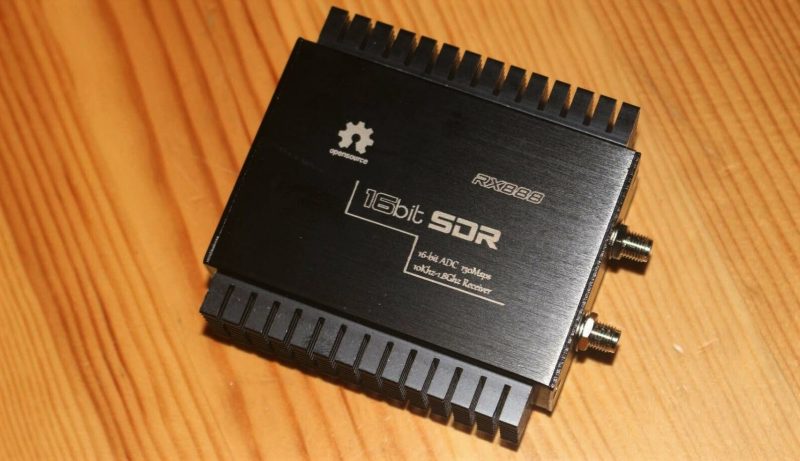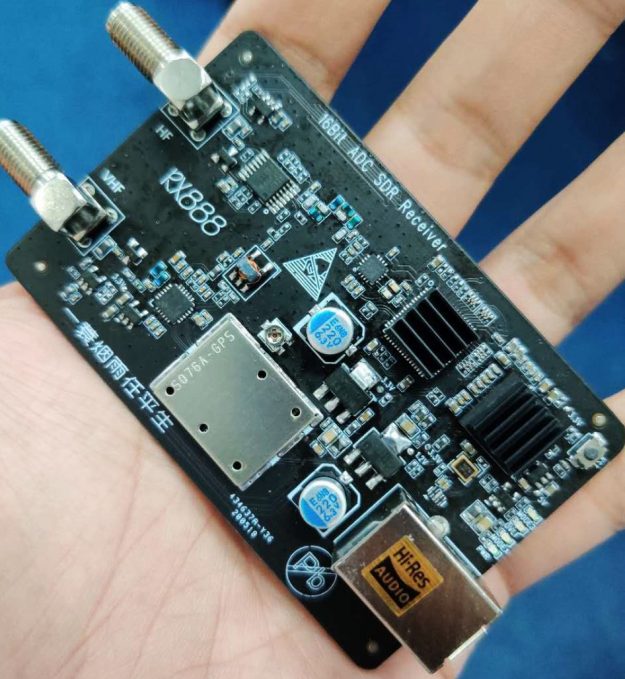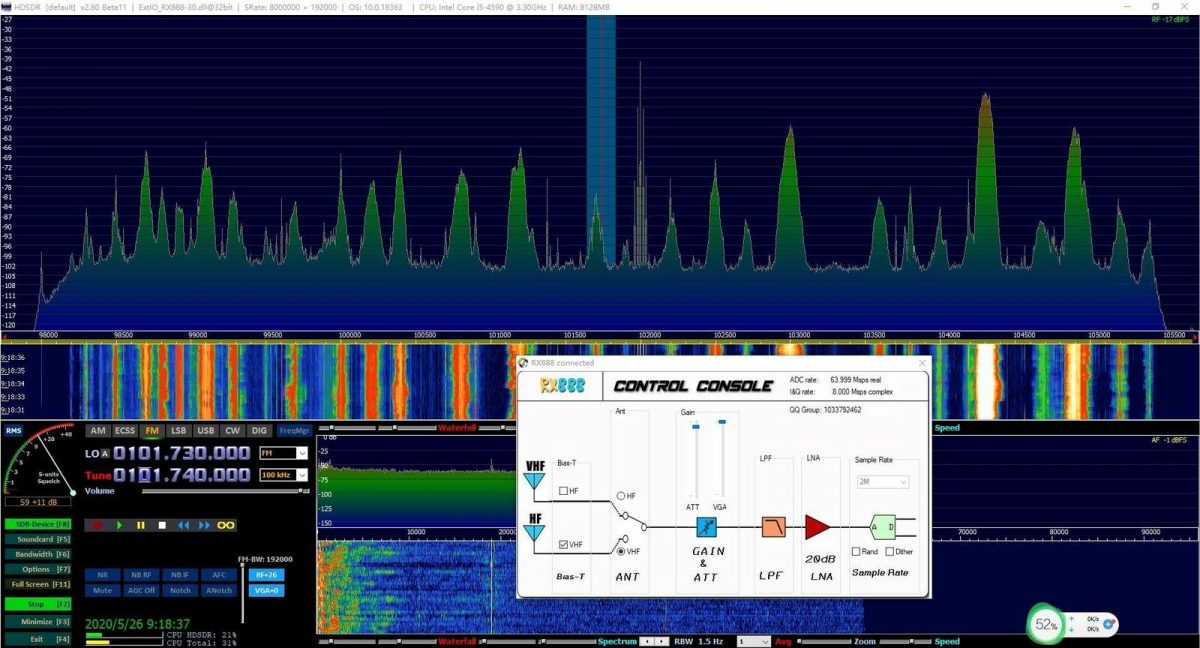Many thanks to SWLing Post contributor, H. Garcia (PU3HAG), who writes:
While doing the daily eBay and AliExpress strolling for new and cool radio stuff, this showed up:
RX888 ADC SDR Receiver radio1.8GHz 16bit direct sampling HF UHF VHF HDSDR
Like the DragonFly RX-666 you posted about recently, it’s based on IK1XPV Oscar’s BBRF103 works. Both share a hefty metal case.
I really like this seller of RX888 on eBay. The person provided quite a bit of technical details. The seller is also up-front about the current challenges regarding thermal issues, software stability and bandwidth available above 32MHz.
(How many manufacturers let you know in advance the negatives? I like this guy!).
The bandwidth limit above 32MHz is a curious one. Apparently, coverage above VHF and UHF coverage relies on Rafael Micro’s R820T2 tuner chip (also used on RTL dongles and AirSpy R2 and AirSpy Mini). However, R820T2 can only push a slice of 8 to 10MHz of the spectrum into RX888’s ADC. So, FM broadcast DXers, be warned. You may need to use a downconverter that brings the 88-108MHz to 8-28MHz. Perseus SDR uses this approach.
Another interesting tidbit. As we know, TaoBao is a huge marketplace, but their sellers focus exclusively on the China market (very few also deliver to South East Asia). There are LOTS of cool, never-seen-before products on TaoBao that don’t have visibility to us here in the Western hemisphere. The RX888 was one of them, I recalled seeing it about a month ago and thinking “Hey, this is so cool, why are they not selling it on AliExpress yet?”
Thank you so much for the tip! I agree with you: it’s refreshing to read not only a thorough eBay description but also frank comments from the seller.
I must admit, the receiver world is going through a dynamic change and its champion is the SDR. It’s hard to keep up with the innovations and technology is pushing limits I could not have imagined even a decade ago.
I’m looking forward to checking out these super wideband SDRs like the RX-666, RX-888, and the ELAD FDM-S3.
Click here to check out the RX-888 on eBay (partner link supports the SWLing Post)
Do you enjoy the SWLing Post?
Please consider supporting us via Patreon or our Coffee Fund!
Your support makes articles like this one possible. Thank you!





From what I’ve read, the RX-666 and the RX-888 seem to share some chips with the KiwiSDR, is there any hope that folks with the newer 666 and 888 might be able to adapt the units to work on the KiwiSDR network of on-line receivers?
I have a RX-888 on the way. If I keep my expectations low, It won’t feel so bad if I’m disappointed :^)
Just going from features alone, this model seems a better choice than the RX-666. It appears that the RX-888 receiver does away with the unneeded and confusing 5VDC connector, includes a LNA, and has a higher precision TXCO. Besides the HDSDR functionality, the EXTIO file should in theory let the RX-666/RX-888 work with Studio 1 and the EXTIO-only version of SDRuno. Fingers crossed…
We look forward to hearing your report, Guy!
I also interested using RX888 with SDRUno. It is possibile?
Hello Bjarne!
Actually, I haven’t tried to contact the seller..
But here’s something that can hel you. IK1XPV Oscar – BBRF103’s fater and possibly RX666 and RX888’s grandfather – wrote a blog post about the products made in China after his project:
http://www.steila.com/blog/index.php?controller=post&action=view&id_post=32
RX888 designer Twitter account is referenced. Perhaps you can try touch basing him to clarify the current status of the software support.
A question to PU3HAG since the seller sells both SDRs and he has communicated well with you: Is it possible that both the RX666 and RX888 use the same ExtIO on HDSDR?